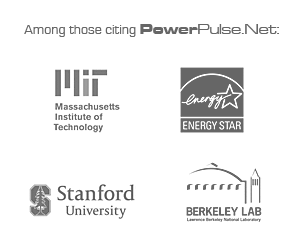Reserve Power Architecture Offers Capital Efficient Alternative to 2N Dual-Bus Power System

As data centers continue to undergo massive changes and become more dynamic environments, power system architecture is changing to address issues of efficiency, scalability and availability.
As data centers continue to undergo massive changes and become more dynamic environments, power system architecture is changing to address issues of efficiency, scalability and availability.
One such change, the reserve architecture approach, represents an attractive alternative to a 2N dual-bus power system configuration, offering comparable availability with lower capital costs, greater efficiency and easier scalability. The architecture is quickly becoming the power system of choice for large cloud and colocation facilities and is increasingly being considered by midsize facilities seeking to implement modular growth strategies.
Dual-Bus Architecture
The dual-bus architecture is often selected for enterprise data centers based on its ability to meet two criteria of higher tier data centers: concurrent maintainability and fault tolerance.
It traditionally features redundant utility feeds, generators, UPS systems and power distribution systems supporting dual-powered IT equipment. When properly designed, the dual-bus system eliminates single points of failure in the critical power system because a failure in any component is isolated. This also allows maintenance to be performed while continuing to power the load.
The price for achieving fault tolerance and concurrent maintainability in the 2N dual-bus architecture is low utilization rates for power system components. To ensure safe operating conditions when one bus is carrying the full load, power system components on each bus, including the UPS system, are typically sized at about 110 percent of the data center load. As a result, in normal operating conditions UPS modules operate below 45 percent utilization. In periods of low demand, such as when the data center is first deployed, utilization can dip to 20 percent or lower. This can lead to reduced system efficiency.
In addition, the complexity of the 2N dual-bus UPS system increases as more UPS modules are required to support the load.
These may not be serious concerns for smaller data centers. However, as data centers grow in size to support hosted and cloud-based computing, the low level of utilization inherent in the traditional 2N dual-bus architecture has a larger impact on operating costs.
Reserve Architecture
As a result, the reserve architecture is being adopted by larger data centers, preserving the concurrent maintainability and fault tolerance of the 2N dual-bus architecture while increasing system efficiency and reducing the number of UPS modules in large data centers.
The reserve architecture essentially creates an N+1 or N+2 architecture within the UPS system, while maintaining fault tolerance and concurrent maintainability through the use of static transfer switches (STS). The STS allows a redundant UPS system to be brought online to pick up the load from any one of multiple UPS systems in the event of failure or maintenance. Downstream from the STS units, the power distribution system can be similar in design to that of a 2N dual-bus architecture.
Through this arrangement, the reserve architecture allows the UPS system to operate at a utilization rate of N/N+1 for a single reserve module or N/N+2 for a dual reserve module. A four-module system with a single reserve is commonly referred to as “5 to make 4.” An eight-module system with a dual reserve module would be “10 to make 8.”
One of the reasons the reserve architecture makes sound economic sense, particularly for large data centers, is the economics of UPS module size: cost per kW goes down as module size increases. An economical power system design is one that uses the largest possible modules while maintaining an appropriate degree of scalability based on customer needs. Using fewer, larger modules also has the advantage of improving the overall reliability of the system.
For data centers at or above 500 kW, designers can utilize large systems to create reserve architectures that are fault tolerant, concurrently maintainable and achieve utilization rates that optimize power system efficiency. The reserve system also can deliver greater flexibility in accomodating growth. Modules can even be deployed on skids to simplify installation of additional power capacity.
Choosing the Right Power System Architecture
It’s important to note that any critical power system must be tailored to the organization’s business objectives and specific technology profile as well as the size and criticality of the data center.
Where availability is paramount and UPS modules can be sized to minimize the number of modules in the system, a traditional 2N architecture may still prove to be the right choice.
However, for businesses seeking to balance efficiency and availability or where data center capacity makes a 2N architecture unwieldy, the reserve architecture offers a solution that delivers very high reliability with fault tolerance and concurrent maintainability while providing superior efficiency, scalability, and resource utilization.
The reserve system architecture represents a viable high-availability approach to critical power for any data center above 500 kW. As data center size increases, the savings from the reserve architecture, in both operating and capital costs, grow and the time to ROI gets shorter.
























